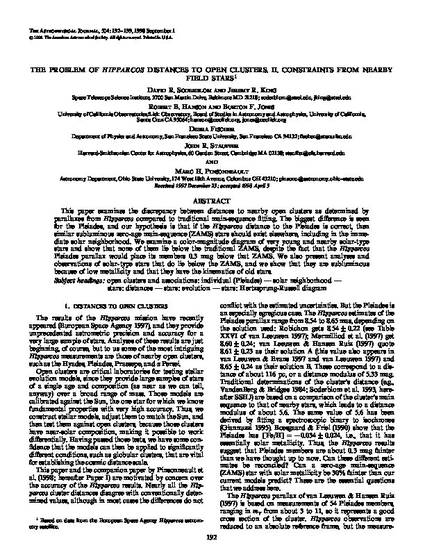
This paper examines the discrepancy between distances to nearby open clusters as determined by parallaxes from Hipparcos compared to traditional main-sequence fitting. The biggest difference is seen for the Pleiades, and our hypothesis is that if the Hipparcos distance to the Pleiades is correct, then similar subluminous zero-age main-sequence (ZAMS) stars should exist elsewhere, including in the immediate solar neighborhood. We examine a color-magnitude diagram of very young and nearby solar-type stars and show that none of them lie below the traditional ZAMS, despite the fact that the Hipparcos Pleiades parallax would place its members 0.3 mag below that ZAMS. We also present analyses and observations of solar-type stars that do lie below the ZAMS, and we show that they are subluminous because of low metallicity and that they have the kinematics of old stars.
